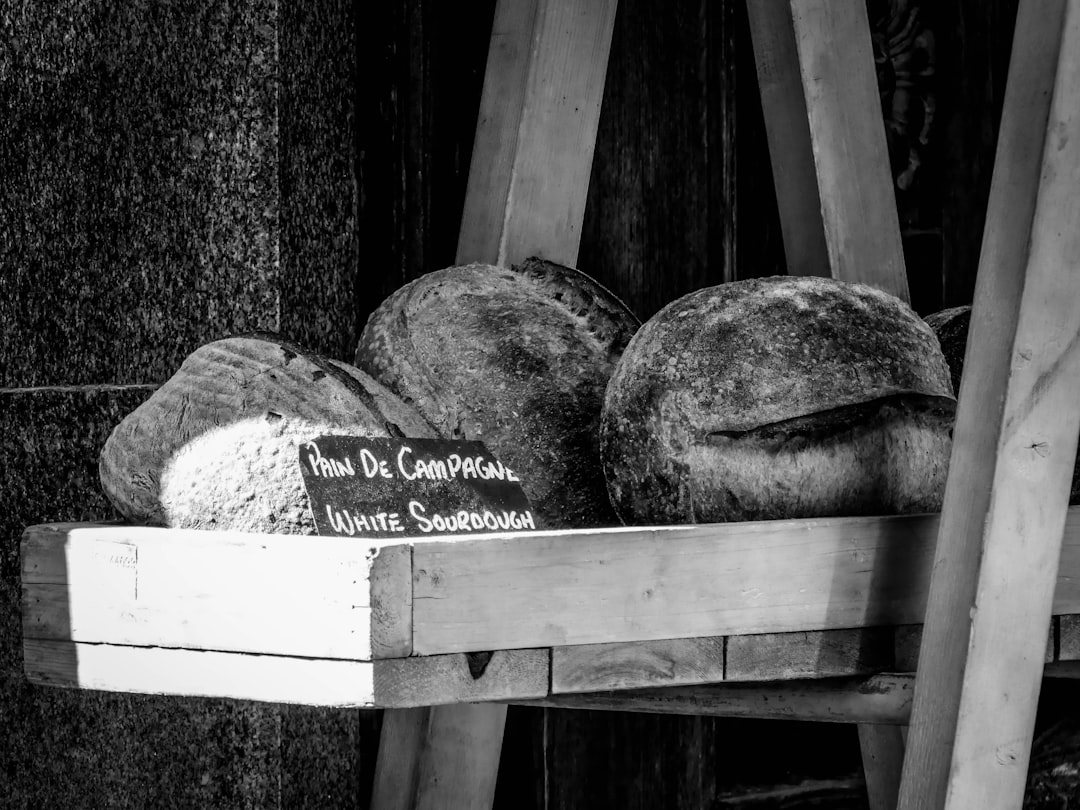The American Breadbasket, often referred to as the heartland of the United States, plays a pivotal role in the nation’s agricultural output. This region, encompassing states like Iowa, Illinois, Indiana, and parts of Nebraska and Ohio, is renowned for its fertile soil and favorable climate, making it one of the most productive agricultural areas in the world.
The economic implications of this region are profound, as it supports millions of jobs in farming, processing, and distribution. However, the importance of the American Breadbasket extends beyond mere statistics.
It embodies a way of life for countless families who have farmed these lands for generations. The culture of farming, with its deep-rooted traditions and community ties, is integral to the identity of this region. As such, any threats to the Breadbasket not only jeopardize food production but also challenge the social fabric and economic stability of rural America.
Understanding the challenges facing this critical area is essential for ensuring its sustainability and resilience in the face of growing pressures.
Key Takeaways
- The American Breadbasket plays a crucial role in global food production and supply.
- Climate change poses a significant threat to the productivity and stability of agricultural land in the American Breadbasket.
- Soil degradation and loss of arable land are major challenges that impact the ability to sustain agricultural production.
- Water scarcity and irrigation challenges further exacerbate the difficulties faced by farmers in the American Breadbasket.
- Pesticide and herbicide resistance, declining agricultural diversity, and economic and policy factors all contribute to the crisis in the American Breadbasket.
The Threat of Climate Change
Climate change poses a significant threat to the American Breadbasket, altering weather patterns and increasing the frequency of extreme weather events. Rising temperatures can lead to prolonged droughts, while unpredictable rainfall can result in flooding, both of which have detrimental effects on crop yields. Farmers in this region are already experiencing shifts in planting and harvesting seasons, which complicates traditional agricultural practices.
The unpredictability of climate conditions forces farmers to adapt quickly, often without adequate resources or support. Moreover, climate change exacerbates existing vulnerabilities within the agricultural system. For instance, increased temperatures can lead to higher evaporation rates from soil and water bodies, further straining water resources essential for irrigation.
Additionally, changing climatic conditions can foster the proliferation of pests and diseases that threaten crops. As these challenges mount, farmers must navigate an increasingly complex landscape that requires innovative solutions and adaptive strategies to maintain productivity.
Soil Degradation and Loss of Arable Land

Soil degradation is another pressing issue that threatens the viability of the American Breadbasket. Intensive farming practices, including monoculture and excessive use of chemical fertilizers, have led to a decline in soil health. The loss of organic matter and essential nutrients diminishes soil fertility, making it increasingly difficult for crops to thrive.
Erosion caused by wind and water further exacerbates this problem, stripping away topsoil that is crucial for agricultural productivity. The loss of arable land is a direct consequence of urbanization and industrial development encroaching on agricultural areas. As cities expand and infrastructure projects proliferate, valuable farmland is often sacrificed for housing and commercial development.
This trend not only reduces the amount of land available for farming but also fragments agricultural operations, making it harder for farmers to maintain efficient production systems. The combination of soil degradation and loss of arable land poses a significant threat to the long-term sustainability of agriculture in the Breadbasket.
Water Scarcity and Irrigation Challenges
| Country | Population Affected by Water Scarcity | Percentage of Land Irrigated |
|---|---|---|
| India | 163 million | 45% |
| China | 130 million | 20% |
| Pakistan | 60 million | 45% |
Water scarcity is an increasingly critical issue facing farmers in the American Breadbasket. While this region has historically been blessed with ample rainfall, changing climate patterns have led to more frequent droughts and irregular precipitation. As a result, farmers are finding it increasingly challenging to secure sufficient water for irrigation during critical growing periods.
This scarcity not only affects crop yields but also places additional stress on already strained water resources. Irrigation challenges further complicate the situation. Many farmers rely on outdated irrigation systems that are inefficient and wasteful.
Upgrading these systems requires significant investment, which may not be feasible for all farmers, particularly those operating on tight margins. Additionally, competition for water resources from urban areas and industrial users can limit access for agricultural purposes. As water becomes scarcer, farmers must explore innovative irrigation techniques and conservation practices to ensure their crops receive adequate moisture while minimizing waste.
Pesticide and Herbicide Resistance
The over-reliance on pesticides and herbicides has led to a troubling phenomenon: resistance among pests and weeds. As farmers increasingly turn to chemical solutions to manage crop threats, many pests have developed resistance to these treatments, rendering them less effective over time. This resistance not only increases production costs but also poses significant challenges for crop management.
Farmers may find themselves caught in a cycle of escalating chemical use, which can have detrimental effects on both human health and the environment. The rise of resistant pests necessitates a reevaluation of pest management strategies within the American Breadbasket. Integrated pest management (IPM) approaches that combine biological control methods with reduced chemical use are gaining traction as sustainable alternatives.
However, transitioning to these methods requires education and support for farmers who may be accustomed to conventional practices. Addressing pesticide and herbicide resistance is crucial for maintaining agricultural productivity while safeguarding environmental health.
Declining Agricultural Diversity

The decline in agricultural diversity is another critical concern within the American Breadbasket. Over the past few decades, there has been a marked shift towards monoculture farming practices, where farmers focus on a limited number of high-yield crops such as corn and soybeans. While this approach may maximize short-term profits, it undermines long-term sustainability by reducing biodiversity within agricultural ecosystems.
A lack of diversity makes crops more susceptible to disease outbreaks and pest infestations, ultimately threatening food security. Furthermore, declining agricultural diversity can have broader ecological implications. Diverse cropping systems contribute to healthier soils, improved pest control through natural predators, and enhanced resilience against climate variability.
Encouraging farmers to diversify their crop rotations and incorporate cover crops can help restore balance to agricultural ecosystems while promoting soil health and reducing reliance on chemical inputs. Revitalizing agricultural diversity is essential for building a more resilient food system in the American Breadbasket.
Economic and Policy Factors
Economic pressures play a significant role in shaping agricultural practices within the American Breadbasket. Fluctuating commodity prices can create uncertainty for farmers, making it challenging to plan for the future. Many farmers operate on thin profit margins, which can limit their ability to invest in sustainable practices or adapt to changing conditions.
Additionally, access to credit and financial resources can be unevenly distributed, leaving some farmers at a disadvantage when it comes to implementing necessary changes. Policy factors also influence agricultural sustainability in this region. Government programs that support conservation efforts or provide incentives for sustainable practices can help mitigate some of the challenges faced by farmers.
However, policy frameworks often prioritize short-term economic gains over long-term sustainability goals. Advocating for policies that promote sustainable agriculture and support farmers in transitioning to more resilient practices is crucial for ensuring the future viability of the American Breadbasket.
The Impact on Food Security
The challenges facing the American Breadbasket have far-reaching implications for food security both domestically and globally. As one of the world’s leading agricultural producers, disruptions in this region can lead to increased food prices and reduced availability of essential staples. Food insecurity is already a pressing issue in many communities across the United States; any decline in agricultural productivity could exacerbate this problem further.
Moreover, global interdependence means that challenges in the American Breadbasket can ripple through international markets. Countries that rely on U.S. agricultural exports may face shortages or increased costs if production declines due to climate change or other factors.
Ensuring food security requires a concerted effort to address these challenges head-on while fostering resilience within agricultural systems.
Potential Solutions and Mitigation Strategies
Addressing the myriad challenges facing the American Breadbasket requires a multifaceted approach that encompasses both immediate solutions and long-term strategies. Implementing sustainable farming practices such as crop rotation, cover cropping, and reduced tillage can enhance soil health while improving resilience against climate variability. Additionally, investing in research and development for climate-resilient crop varieties can help farmers adapt to changing conditions.
Collaboration among stakeholders—including farmers, policymakers, researchers, and community organizations—is essential for developing effective solutions. Creating educational programs that promote sustainable practices can empower farmers with the knowledge they need to make informed decisions about their operations. Furthermore, advocating for policies that support conservation efforts and provide financial assistance for sustainable initiatives can help create an environment conducive to positive change.
The Role of Technology and Innovation
Technology and innovation hold great promise for addressing many of the challenges facing the American Breadbasket. Precision agriculture techniques that utilize data analytics and advanced sensors can optimize resource use while minimizing waste. Drones equipped with imaging technology can monitor crop health more efficiently than traditional methods, allowing farmers to respond quickly to emerging issues.
Moreover, advancements in biotechnology offer potential solutions for pest resistance and crop resilience against climate stressors. However, embracing these technologies requires careful consideration of their environmental impacts and ethical implications. Ensuring that technological advancements align with sustainable practices will be crucial for fostering a resilient agricultural future.
The Urgency of Addressing the Crisis
The challenges confronting the American Breadbasket are urgent and multifaceted, demanding immediate attention from all sectors of society. Climate change, soil degradation, water scarcity, pesticide resistance, declining diversity, economic pressures, and policy shortcomings all contribute to a complex crisis that threatens food security both locally and globally. Addressing these issues requires collaboration among farmers, policymakers, researchers, and consumers alike.
As stewards of one of the world’s most productive agricultural regions, there is an imperative to act decisively in safeguarding its future. By prioritizing sustainable practices, investing in innovation, and advocating for supportive policies, stakeholders can work together to ensure that the American Breadbasket continues to thrive as a vital source of nourishment for generations to come. The time for action is now; failure to address these challenges could have dire consequences for food security and rural communities across America.
The decline of the American breadbasket has been a topic of increasing concern, as climate change, soil degradation, and water scarcity threaten the agricultural productivity of this vital region. For a deeper understanding of the geographical and environmental factors contributing to this issue, you can explore a related article on MyGeoQuest. This resource provides insights into how these challenges are reshaping the landscape and what it means for the future of food security in the United States.
WATCH NOW! Why America’s Heartland Is Disappearing Fast
FAQs
What is the American breadbasket?
The American breadbasket refers to the region in the United States known for its abundant production of wheat, corn, and other grains. This region includes states such as Kansas, Nebraska, Iowa, and Illinois.
What is meant by “the end of the American breadbasket”?
The phrase “the end of the American breadbasket” refers to the potential decline in the productivity and fertility of the agricultural land in the traditional breadbasket region. This could be due to factors such as climate change, soil degradation, and water scarcity.
What are the potential causes of the end of the American breadbasket?
Potential causes of the end of the American breadbasket include climate change leading to extreme weather events, soil erosion and degradation, depletion of groundwater resources, and the loss of biodiversity.
How could the end of the American breadbasket impact food production?
The end of the American breadbasket could lead to a decrease in food production, particularly of staple crops like wheat and corn. This could result in food shortages, increased prices, and potential impacts on global food security.
What are potential solutions to address the end of the American breadbasket?
Potential solutions to address the end of the American breadbasket include sustainable agricultural practices, investment in soil conservation and restoration, water management strategies, and the development of drought-resistant crop varieties. Additionally, policies to mitigate climate change and support sustainable farming practices could also play a role in addressing these challenges.
